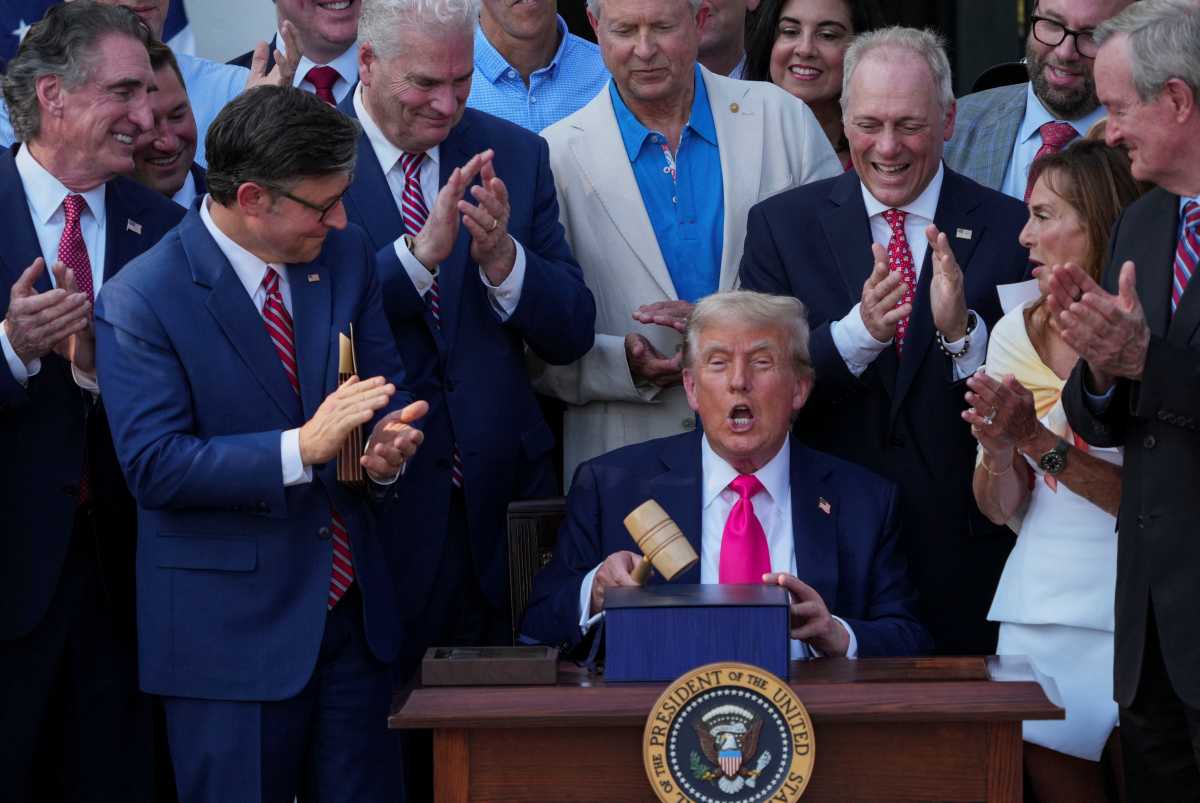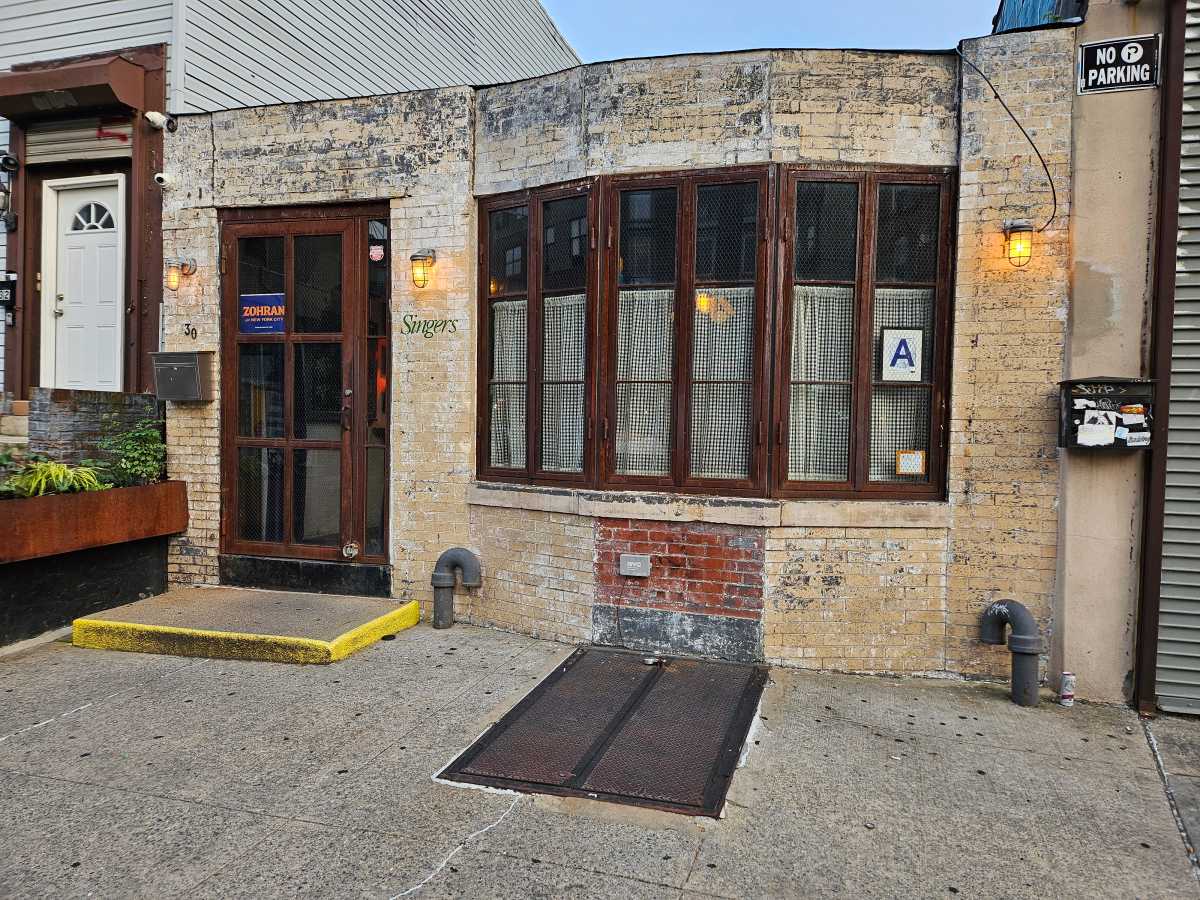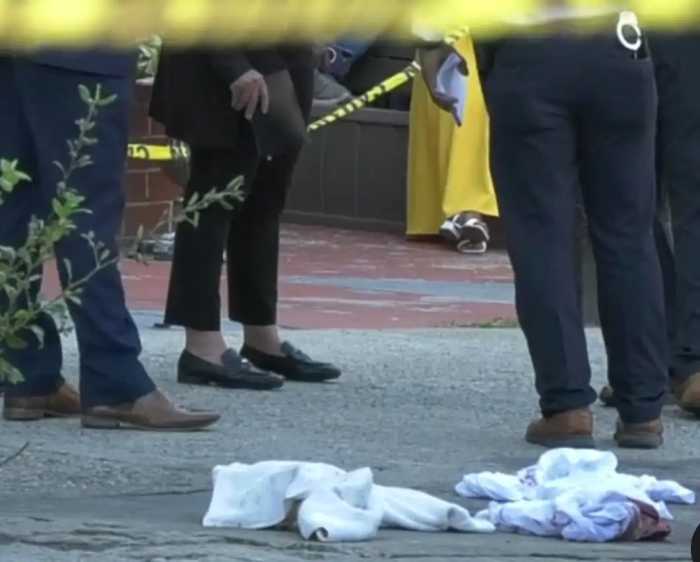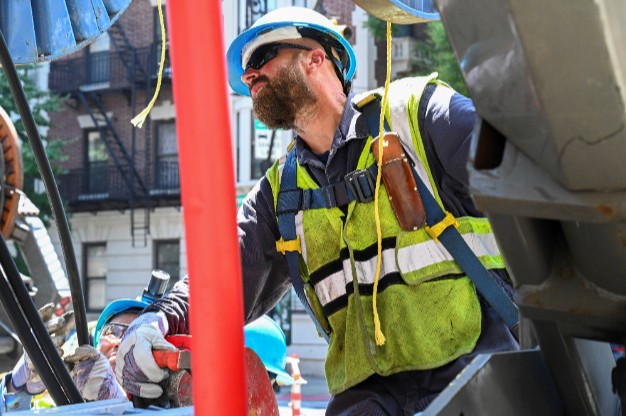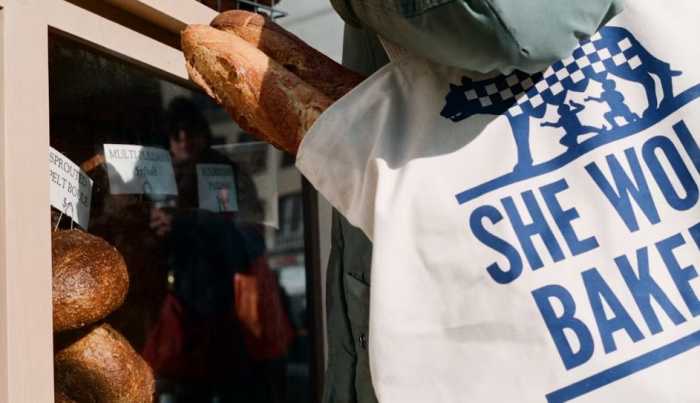
BY BILL WEINBERG | The “Goddess of Democracy” became a global icon when it was raised by student protesters in Beijing’s Tiananmen Square in 1989 — before the movement was put down in the massacre of June 4.
In the prelude to this year’s anniversary of the massacre, the Democracy Goddess came to Manhattan’s Chinatown. While the original raised in Beijing 27 years ago was of papier-mâché and stood some 30 feet tall, this one was of fiberglass and about 10 feet high. It was raised in Confucius Plaza on May 30, right in front of the statue of the revered philosopher, at the corner of Bowery and Division St.
Owing much to New York’s Statue of Liberty but also to the French Marianne, the Goddess stands holding a torch aloft. Across the statue’s breast is a banner with the words “Freedom is not free.”
Standing below were her creator, California-based artist Chen Weiming, and his small entourage. They had just arrived in the city following a cross-country tour with the Goddess.
Chen said this fiberglass version, constructed in his studio in the Mojave Desert town of Barstow, is a prototype for a colossus he hopes to cast in bronze. This would stand a symbolic 64 meters — for June 4. In China, “6-4” is popular code for the massacre, which remains a forbidden topic there. With its base, the statue would stand 89.64 meters, the “89” referencing the year of the massacre. At this height, it would rival the Statue of Liberty, which stands 93 meters, ground to torch.
Chen, amiable and with slightly disheveled hair, stated ambitiously, “I hope to move it into China when there is democracy there.”
Of course, he hopes to raise it over Tainanmen Square — specifically, at the site of Mao Zedong’s mausoleum, which now overlooks the square on the south.
“We should move Mao out, like they moved Stalin from Red Square,” he said. “We should build a memorial to democracy there.”

While followers of the Falun Gong meditation practice frequently have tables set up in Chinatown protesting persecution of their kind in the People’s Republic, images of the 1989 pro-democracy movement are considerably rarer. The side of the truck that carried the fiberglass statue displayed photos from those fateful days in Beijing a generation ago — tanks advancing on protesters, residents coming to the aid of the stricken.
New York was the second-to-last stop on the Goddess’s tour. It left Los Angeles on May 14, after a display outside that city’s Chinese consulate. The statue then moved on to stops in Las Vegas, Denver, Chicago, Cleveland, Boston and the Yale campus in New Haven before arriving in front of the Isaiah Wall across First Ave. from the United Nations on May 27, and then down to Chinatown three days later. The Goddess’s last New York stop was a June 3 rally near Times Square, before moving on to a culminating rally in Washington, D.C., two days later.
And before the dreamed-of day when the bronze colossus can rise in Beijing? Chen names Freedom Square in Taiwan’s capital as a possibility. He said he was in talks a few years ago with the local government of Taiwan’s Jinmen Island — also known as Quemoy, the scene of the 1958 crisis when it was attacked by Chinese forces. But before he could raise the statue there, Taiwan’s then-pro-China government interceded. With the new and more independent-minded Tsai Ing-wen now in office (Taiwan’s first woman president), Chen may try again.
Chen was born in Hangzhou, Zhejiang province. That’s just up the coast from Fujian, from where many of Chinatown’s newest residents hail. He worked in public sculpture for municipal governments in the ’80s, and his statues are still standing in the squares and parks of Zhejiang. When asked what they depict, Chen answered: “Chinese culture and beautiful ladies.”
He arrived in New Zealand in 1988 — six months before the massacre. The news changed his life.
“After ’89, I became committed to human rights,” he said. And this was reflected in his work. “No more just beautiful women,” he said with a smile.
Chen’s political commitment has taken him to some global frontlines. He took out his cell phone to show me a picture of himself standing with Syrian revolutionaries in besieged Aleppo, with a banner reading, “CHINESE PEOPLE SUPPORT SYRIAN PEOPLE,” in English, Chinese and Arabic. Another showed him brandishing a rifle with a group of Free Syrian Army fighters. Chen said he went to Aleppo in 2012 to do an art installation in support of the Syrian revolution, but ended up helping to defend the city from forces of Bashar Assad’s regime.
“China is supporting the dictator,” he said. “So I wanted to show my solidarity.”
The June 3 rally near Times Square was organized by the Democratic Party of China, which was launched as an opposition party in the People’s Republic in 1998. But the party was never allowed to officially register there, and hundreds of its supporters were arrested — with many still imprisoned today. Since 2010, the party’s headquarters have been in Flushing, Queens —although it has chapters in several countries around the world touched by the Chinese diaspora.
One of the D.P.C.’s sibling organizations is the Federation for a Democratic China, whose president, Sheng Xue, came down from Toronto for the raising of the statue in New York. Sheng is a veteran of the 1989 pro-democracy movement, and had to flee China in the subsequent crackdown.
Sheng paints a grim picture of her home country today.
“At least when I was there, we had security,” she said, referring to the so-called “iron rice bowl” and guarantees for education and healthcare. “They took all that away. The people no longer have protection. The whole country is like a jungle — you have to fight for your living. They opened the only door in China — the economic door. And everybody ran for that. But it led to the jungle.”
And some tentative moves toward greater political openness in recent years are being rapidly undone under President Xi Jinping, Sheng asserted.
“It looks worse than 1989,” she said.
Arranged at the foot of the stage at the Times Square rally were candles forming the Chinese characters for 6 and 4. Above the stage was a banner with a fanciful photoshopped image: Chen Weiming’s bronze Goddess towering over Beijing’s historic Marco Polo Bridge, lined with stone lions.

















